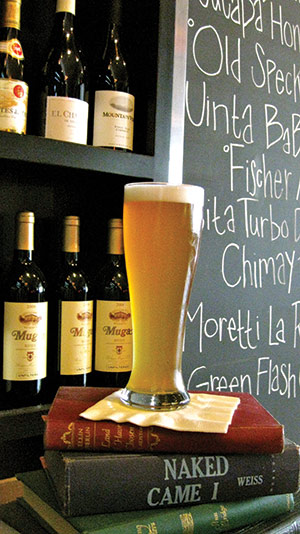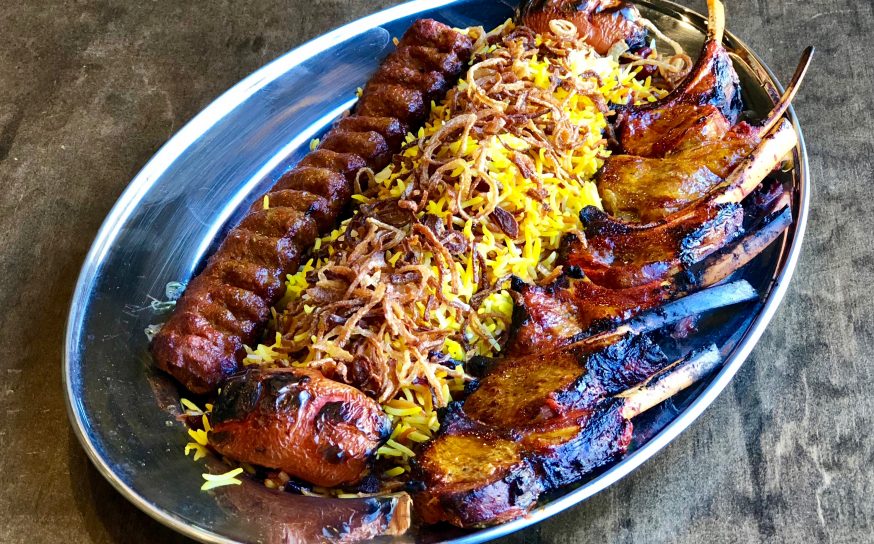
It Takes A Village
The Village is all the rage on the Boulevard right now. An inside look at everything from the short ribs to the long lines.
-
CategoryUncategorized
-
Written byTiffany Shinn
I heard it before I saw it. It’s not yet 8 p.m. on a Tuesday night, and a half-block away from The Village, I can hear the ambient roar of a busy restaurant. Entering, I can see why.
On the patio, there is a retractable ceiling that’s cranked wide open. Every seat is occupied. Producer-types clink wine glasses. Groups of 30-somethings chuckle over slices of pizza. Waiters hustle through the masses. And a hostess is missing.
From chef and owner Frank Leon (who also owns 27-year-old Valley staple La Loggia), The Village has all the visual indicators of a contemporary gastropub: exposed filament lightbulbs, an outdoor wood fire oven, and a chalkboard menu revealing a respectable collection of craft beers. There’s a moderately priced wine list, trendy cocktails garnished with the likes of bacon and basil, and a menu of shared plates or “tapas” ranging from sautéed cider-glazed Brussels sprouts to a fried-egg-topped skirt steak.
Back to the hostess. I’m shuffling my feet and watching waiters pass by without even glancing my way. Other customers join the line. More minutes pass, and my dinner companion and I exchange cautious looks.
Finally a hostess appears and we’re led to the only table available, inside the restaurant in the back. There, we’re forced to stare at a monstrous bar lined with colorful jars, dangling red peppers and plucked basil plants. The seat isn’t ideal—I’m a player who has been benched, but the game is still in session on the patio.
The menu is divided into four sections: basic bites, mozzarella bar, pizza bar and desserts. The pan con tomate, the only authentic Spanish tapas listed, makes for a perfect starter. The ciabatta is toasted until golden then rubbed with garlic, ripe tomato, and finished with a touch of olive oil and sea salt—simplicity that should not be overlooked.
The same holds true with the quinoa salad, a remarkably fresh concoction of Israeli couscous, garbanzos, French lentils and cherry tomatoes dressed in a delicate pesto. It is one of the more understated dishes on the menu but also one of the best. The gumball-sized meatballs, a well-executed dish carried over from La Loggia, are tender and accentuated with Swiss chard, a subtle hint of pernod, then doused in a fragrant tomato sauce.
The short ribs, which our waitress emphasizes are “braised for eight hours” in a semi-sweet French bordelaise sauce and placed atop a cloud of polenta, are on the fattier side and slightly disappointing. If you don’t get to the dish right away, the polenta begins to harden. Mashed potatoes might have been better here.

Zucchini Flower Pizza
The menu does have some other pitfalls. The jalapeno mac and cheese overcompensates in creaminess where it lacks in flavor, despite an extra dose of chopped jalapenos, advised by our waitress. As a daring carnivore, I was thrilled to see Spanish blood sausage on the menu. But the sausage, which is traditionally served in thick slices, was cut thin and hidden in a murky stew, diluting the pungent flavor embedded in the wurst. The result was a dish overpowered by the garbanzos and fried egg. The highly recommended aglio-olio pizza also didn’t meet the mark. It was weighed down by an oily surface and a pudgy, dull crust.
We suspect that owner Leon, who also works as a private chef, is not in the kitchen nightly, meticulously tweaking dishes, but rather manning the business from afar. It may not matter. You’ve witnessed the crowds, you’ve heard the buzz, and you want to experience the celebratory thrill you can only get from a restaurant at capacity. With a few menu modifications and improvements to service—starting with a hostess keeping watch—The Village might someday very well live up to the hype.











